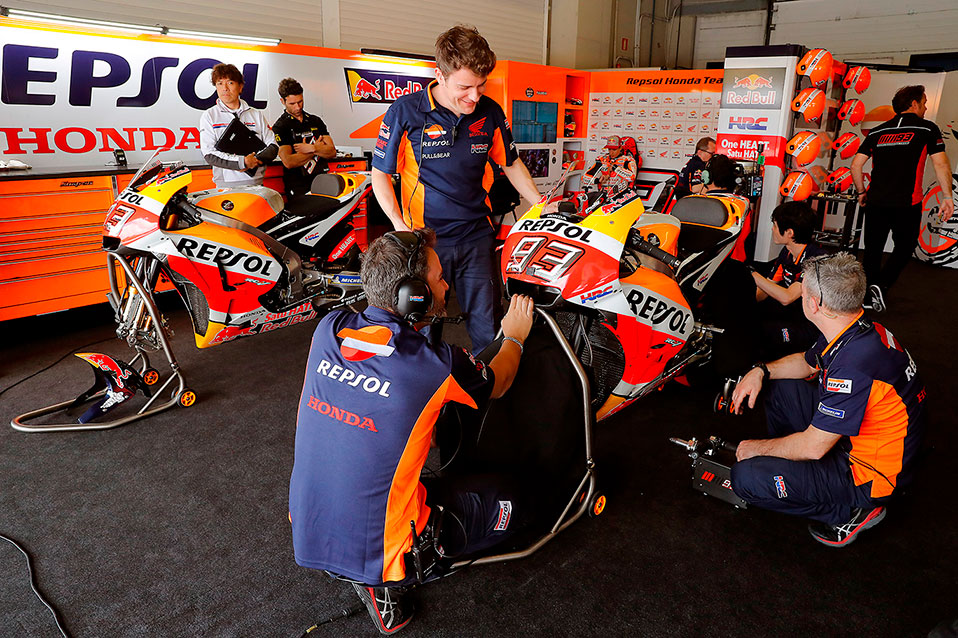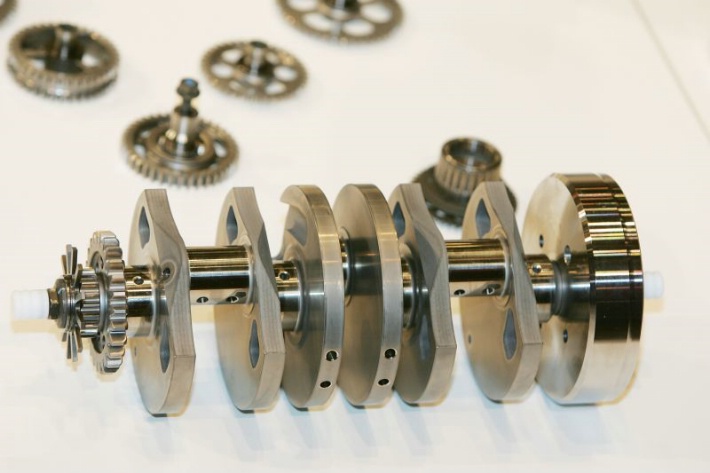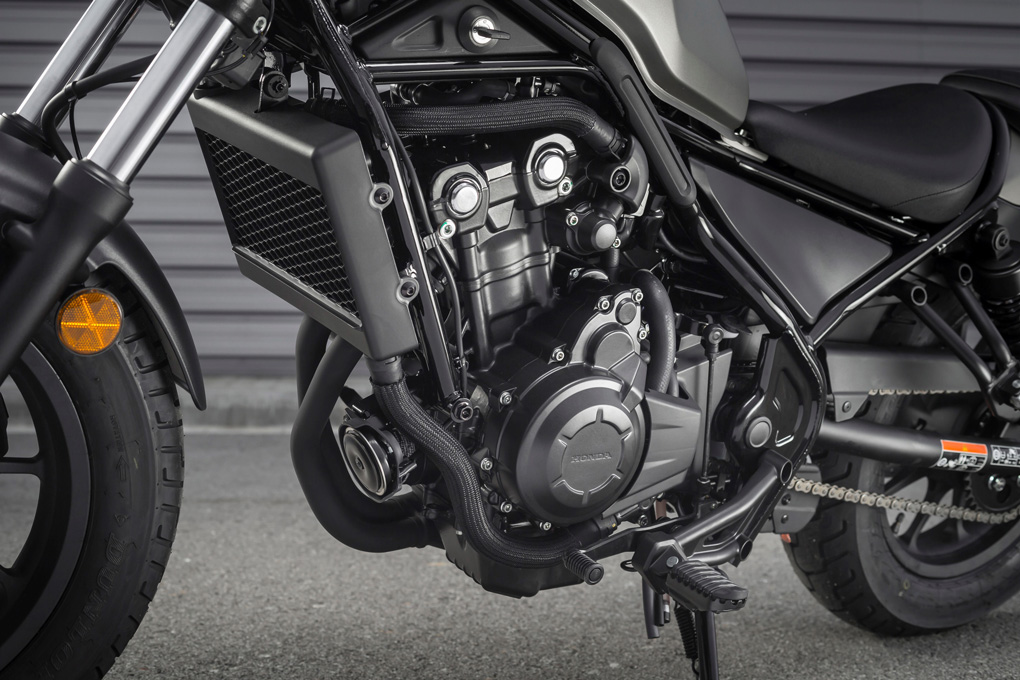Camber – Inclination
This term can refer to the inclination found in turns (see: banking). It can also refer to the inclination of tyres with respect to their horizontal plane in four-wheeled vehicles.
Camshaft
This engine element is part of the mechanism that activates the inlet and exhaust valves. The camshaft triggers the opening and closing of valves at the right moment by way of a rotational movement. In a 4-stroke engine, the camshaft completes its cycle in two full shaft rotations.
Cubic centimetre: CC – Cubic centimetres
A unit of measure used to quantify volume. A cubic centimetre is the volume contained by a cube of width, length, and height of one centimetre. One millilitre is equivalent to 0.06 cubic inches, 0.00026 gallons, and 0.00021 British gallons. It’s also the most frequent unit used to measure engine cylinder displacement.


CFRP
This acronym stands for Carbon Fibre Reinforced Polymer. This material is used in competitions for the fairing, protection, and supporting elements. Its light-weight and high resistance are its main qualities; though sudden impacts tend to shatter it rather than snap or bend it.
Chattering
In the motorcycling context chattering is a vibration that occurs when breaking before a turn and sometimes when the bike is inclined. This effect usually occurs in the front axle due to resonance between the tyre carcass, breaks, and suspension system. This vibration can cause instability which is why engineers try to minimize its effects. To reduce chattering, the positioning of various components is harnessed as well as its flexibility.
Chicane
A sequence of two consecutive turns in opposite directions on a track resulting in an “S” shape. The chicane aims to reduce velocity at points in the circuit where they are located.


Clutch
The clutch is the mechanism that allows the rider to engage and disengage the engine with the gearbox. This is needed to change gears, however, in MotoGP the clutch is only used at the race start, given that a seamless gearbox doesn’t need to disengage in order to change gears while in movement.
Combustion chamber
It is a cavity located at the upper part of the cylinders where air-fuel mixture is ignited. In some engines this cavity may be housed in the body of the piston itself. The shape and volume of this space is fundamental towards achieving maximum propellant performance.
Compounds
In competitions, to speak of compounds is to speak of tyres. Catalogued compounds may be discussed as a function of their hardness: soft, medium, and hard. The formulas for creating these rubbers vary as a function of the requirements, circuit, and climate.
Conrod
Conrods are elements that connect the crankshaft to the pistons allowing for the conversion from linear to rotational motion.


Crankshaft
It is the part of the engine that moves thanks to the conrod push. It transmits the piston movement to the rest of the assembly. Its an element whose design requires the extensive study of weights, shapes, and sizes.
Curbstone
We call curbstone the areas on the exterior of the track and are found at turns and the turn exits. They are coloured in patterns of two or three colours. The surface of curbstones is ribbed making driving more difficult.
Cylinder block
Found between the carter and cylinder head, the engine block is where the cylinders, refrigeration conduits, lubrication and other elements are located.
Cylinder head
The upper part of the engine. It is situated over the body of the cylinder block. This is the area where for most engines we can find the valves, combustion chamber, camshaft, spark plugs, and injectors.


Dashboard
An electronic panel where the rider can see information about the engine: electronic adjustments and the times they are getting. In recent championships, messages from boxes or Race Direction can also be shown here.
Displacement
It is the sum of available engine cylinder and combustion chamber space. It is typically measured in cubic centimetres.
DNA, DNF, DNQ, DNS, DSQ
All of these make reference to the rider’s possible race scenarios.
1. DNA “Did not attend” indicates a rider did not turn up for a race.
2. DNF “Did not finish” indicates a rider did not complete the race.
3. DNQ “Did not qualify” reveals a rider was unable to pass the qualification phase.
4. DNS “Did not start” is used to refer to when a pilot does not begin a race.
5. DSQ “Disqualified” is the worst of all possible scenarios. It tells us the rider has been disqualified and should abandon the race losing all points they may have otherwise obtained.
DOHC
Double Over Head Camshaft. Its a type of engine with two camshafts that are placed over the cylinder head or cylinder heads if there are more than one. It is currently a widely used configuration that allows for placement of the spark plug at the centre of the combustion chamber.


Drag
This term refers to the force a body suffers when moving through air. This force generates an aerodynamic brake on exposed vehicle elements, which, in the case of motorbikes, includes the rider. This effect is taken under consideration for designing the fairing, and rider helmet.
Dry race
This is how Race Direction designates tests where there is no rain. Motorbikes will mount slick tyres that have no grooves to improve traction with the dry asphalt. In the case rain were to make an appearance it would be considered a Wet race. If conditions change during a race it is referred to as a flag to flag race.
MotoGP Glossary: A and B
MotoGP glossary: E & F
3 months ago


 Join Us
Join Us  Join Us
Join Us 

